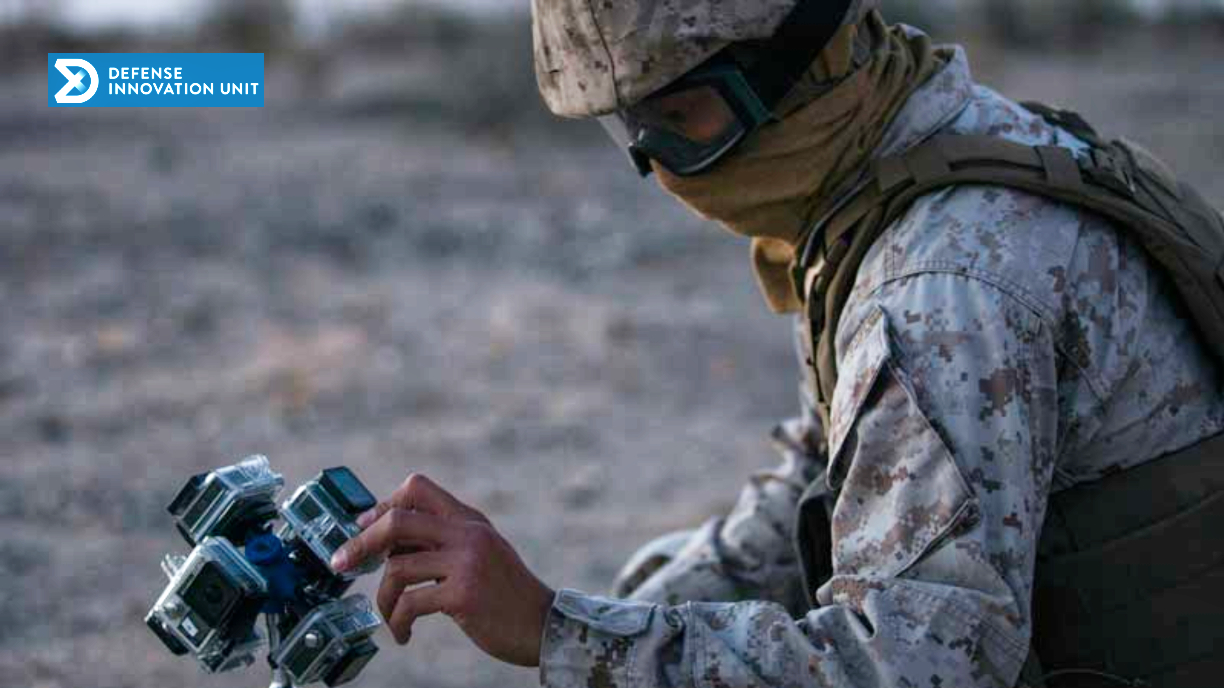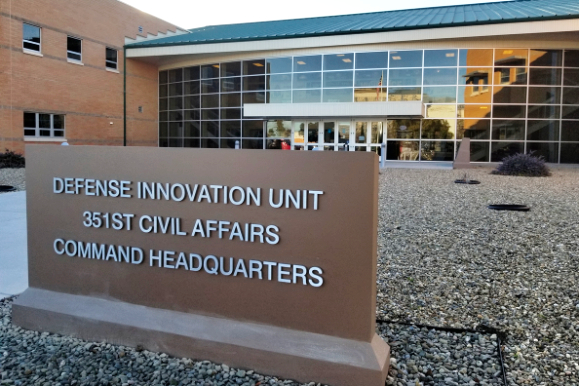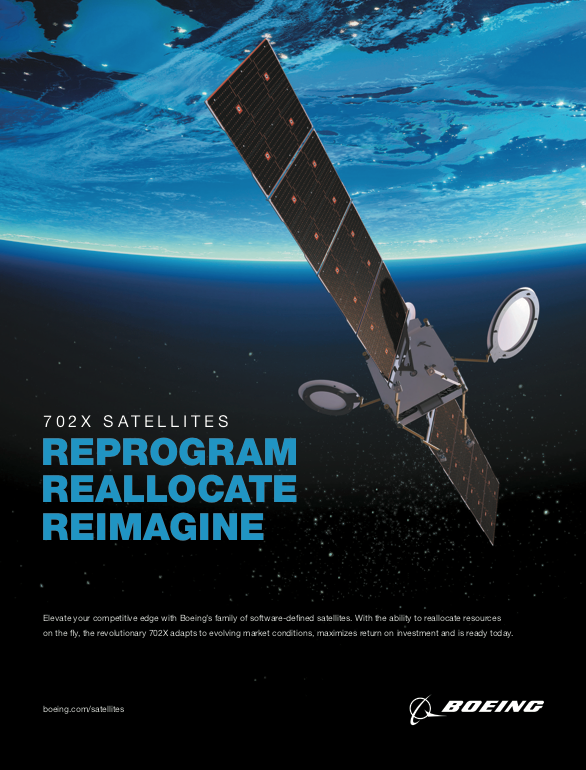The attention of the world was recently captivated by the fate of a large Chinese rocket booster precariously tumbling back to the Earth’s surface. The trajectory of an uncontrolled Long March 5b core stage traversed densely populated regions of several continents and was visually detectable with the naked eye due to its tremendous size: 30 meters in length and 5 meters in diameter.

In the end, the largest piece of unguided space debris to re-enter the atmosphere, weighing in at more than 20 tons, did so over the Arabia Peninsula and plunged into the Indian Ocean near the Maldives archipelago island chain. The incident drew harsh criticism from spacefaring members of the international community, including the United States, all of whom strictly comply with safety standards intended to prevent loss of life or property. The saga of the Long March 5b rocket booster is noteworthy because it is emblematic of ‘old’ space, a legacy method of space operations delivering fully integrated systems to orbit by means of expendable launch vehicles. The term ‘expendable’ is not to be taken lightly — roughly 95 percent of the launch vehicle becomes debris that lingers on-orbit or returns to Earth’s surface.
In stark contrast, the U.S. is at the forefront of a new method of space operations that leverage reusable vehicles, serviceable buses and modular systems that will be assembled and repaired on orbit. This operational construct is the hallmark of the ‘new’ space era.
A waterfall of recent developments signifies that the U.S. is rapidly advancing into this new era of space operations that makes use of in-space mobility, servicing and logistics to rapidly scale and develop new economic markets beyond Low Earth Orbit (LEO). Northrop Grumman and Space Logistics LLC’s second successful capture and servicing of a communications satellite in a Geosynchronous Orbit (GEO) is exemplar of new space operations.
The successful launch and landing of the SpaceX Starship SN-15 is another. Collectively, these capabilities will significantly reduce the cost and increase access to space beyond LEO and will contribute to a sustainable and extensible space logistics infrastructure supporting commercial, civil and national security space activities.
A whole-of-nation effort that includes the Department of Defense (DoD) is essential to assuring U.S. leadership in this endeavor. Some infrastructure systems that benefit all Americans started off as military projects. For example, the Interstate Highway System began with the desire by President Eisenhower for a road system that could move military equipment more quickly.
The Global Positioning System or GPS, which is a cornerstone of our economy today, began with the need for more precise military navigation. Even the transcontinental railroad of the 1800s had extensive military participation. Eventually, every one of these systems became very important to commerce, travel, and economic growth, greatly surpassing the military needs that were the impetus for their development.
Every physical domain except one, space, is supported by a logistics infrastructure that benefits all human activity. Infrastructure supporting commercial, civil and military space activities will fundamentally change human activity and expansion into space and forthis reason the U.S. must be a leader.
Today we see a confluence of factors in the space sector demanding that a new logistics capability be placed into orbit, serving both Earth-orbiting and cislunar customers. Let us begin with the military imperative.

We know that potential adversaries are pursuing multiple avenues to deny the advantages of space systems that the US currently relies upon for support of military operations. By contrast, “(t)he U.S. desires a peaceful, secure, stable, and accessible space domain. Strength and security in space enables freedom of action in other warfighting domains while contributing to international security and stability.” To achieve this, space mobility and logistics is being implemented as one of the five “core competencies” of the US Space Force (USSF).
Specifically, space mobility and logistics (SML) as viewed by the USSF is the movement and support of military equipment and personnel into the space domain, from the space domain back to Earth, and through the space domain. The ability to control and exploit the space domain always begins with physical access to orbit.
SML starts with the ability to launch military equipment into the proper orbit in a safe, secure and reliable manner. During conflict, space launch must be dynamic and responsive, providing the ability to augment or reconstitute capability gaps from multiple locations.
Today, SML is largely uncontested, though the history of warfare highlights that this condition will not last. Military forces must, therefore, prepare to defend physical access to the space domain — a key focus of defensive operations and the need for military space forces to be prepared to project combat power.
Orbital sustainment and recovery is another important application of SML. Already demonstrated in the commercial sector, orbital sustainment will allow military space forces to replenish consumables and expendables on spacecraft that cannot be recovered back to Earth.
Orbital sustainment will also enable spacecraft inspection, anomaly resolution, hardware maintenance, and technology upgrades. Orbital recovery allows for the recovery of personnel or military equipment from the space domain. This includes objects such as reusable spacecraft or launch boosters.
In every domain of military operations, a robust and well executed logistics system is critical to success and space will be no exception. Great powers such as the United States project power across the globe with logistics — the capability to execute logistics in space will become vital to the preservation of peace and the freedom of commerce as well. With respect to the latter, the U.S. became a great economic power seven decades before it emerged as a great military power at the conclusion of World War II.
Nonetheless, a space logistics system should not be developed solely for military priorities. Future space operations in all sectors — commercial, civil and military — can be transformed via a reusable, adaptable architecture with fundamental advantages over current practice.
Advances in orbital assembly, manufacturing and servicing, space transportation, and robotic capabilities can also leverage the emerging spectrum of launch systems to enable this new space logistics infrastructure. The near-term result will be the same advantages of modularity, serviceability and reusability vital to most major industries. The space industrial base would be strengthened through the addition of new, innovative U.S. suppliers. Accelerating technology into orbit would provide key advantages over peer competitors, enhancing US dominance in the space arena.
What shape will this new national system take? Like any logistics system, space infrastructure must include goods, depots, energy sources, maintenance and repair facilities, transportation routes, vehicles that carry the goods and the receiving customer.
The system originates with manufacturers of space systems and space launch. Orbital depots can store propellant, other commodities, and payloads with new capabilities.
The required energy would initially be propellant launched from Earth, taking advantage of lunar-sourced propellant further in the future. Maintenance, repair and upgrade can be performed by vehicles such as DARPA’s Robotic Servicing of Geosynchronous Satellites (RSGS), expanding to more diverse providers in the future.
Long-range orbit transfer vehicles will bring cost savings through reusability, just as launch vehicle first stages are demonstrating economic value today. The transfer vehicles will travel routes determined by astrodynamics and propulsion, providing commodities, modules and new functionality to the receiving spacecraft.
DoD, NASA and commercial space operators would all be customers and consumers in such a system. Most importantly, this space infrastructure must eventually become seamless with terrestrial logistics infrastructure.
What are the across-the-board benefits of this new space logistics enterprise? There are many:
• Accelerated introduction of technology into space, given the more rapid development times for modular rather than fully integrated designs.
• Movement and maneuver at will, for economic, operational or defensive needs, enabled by on- orbit propellant depots and spacecraft equipped for refueling.
• Building “in space for space,” overcoming the tyranny of the launch fairing via robotic assembly of very large structures for communications, tracking, and surveillance.
• Servicing, sustaining and upgrading space systems, preventing obsolescence through frequent upgrades, while leveraging durable structure and propulsion components.
• Increased modularity of space systems, which expands the industrial base, makes the supply chain more robust, and decreases costs of failures.
• Reconstituting space assets lost in conflict becomes more feasible, with the ability to leverage small launch vehicles, small payloads and reusable in-space transportation.
• Enabling the projection of national power in space just as logistics are critical for power projection in terrestrial conflict.
• Attracting international partners to this economical and flexible infrastructure, creating good will and enhancing space capabilities of allies.
The Defense Innovation Unit (DIU), along with its DoD partners and commercial providers, is executing early stage programs that could represent prototypes of the transport, depot and customer components of the space logistics architecture.
In addition, DIU and other components, such as DARPA and the Air Force Research Lab’s Space Vehicles Directorate are investing in robotics, autonomy, cyber security and artificial intelligence that can enhance the robustness and functionality of the architecture. Some manufacturers are already preparing their satellites to take advantage of a prospective logistics capability.
Getting hardware into orbit is one vital aspect of the infrastructure. The complement to that is retrieving data from that orbiting hardware. As the CIA’s CORONA program discovered in the 1960s, downmass is an extremely inefficient way to recover data from space assets.
Since CORONA, military space assets have traditionally used dedicated military ground stations, built at latitudes appropriate for the orbital plane of the mission. Communications were only possible during very limited line-of-sight opportunities when the vehicle overflies a fixed ground station, restricting bandwidth and potentially introducing hours or even days of latency between tasking, analysis and delivery of information. Improvements have been made by diversifying ground station locations and installing higher data rate radios but the paradigm has not significantly changed.
The new markets of commercial satellite constellations have bred a market for commercial satellite communications. Organizations such as KSAT and AWS have established large distributed ground station networks with state-of- the-art radios.
However, individual vehicles must still experience periodic communications blackouts because of the immutable fact that the Earth’s surface is mostly water (notwithstanding monolithic data relay ships for critical missions, such as the USAFS Vandenberg).
After collection, the raw data must be processed into useful products. Once the domain of secretive specialized defense agencies, such as the NRO and NGA, there is now a rapidly growing market for commercial analytics companies running artificial intelligence and machine learning algorithms on public source data to derive actionable intelligence, within all sectors — commercial, civil and military.
Civil uses include monitoring land use, pollution and weather. Commercial uses have surpassed all expectations and continue to grow every day, from informing insurance and commodity futures to inspecting pipelines and transmission lines to monitoring traffic in competitors’ carparks. Disseminating this intelligence has become simple in the era of the internet. Military users are often much harder to connect, in remote and austere environments.
All military branches had independently discovered these problems. The Air Force had initiated the Advanced Battle Management System to find a solution, while the Navy launched Project Overmatch and the Army developed Project Convergence. The Joint Staff is integrating these efforts into the Joint All-Domain Command and Control (JADC2).
The ultimate vision is an “internet in space.” There are now enough satellites in enough orbits that each is always within line-of-sight of others, and some are always overhead a ground station. With the correct network architecture and security protocols, commands should be able to be relayed from a ground station to any satellite at any time, the satellite closest to the objective area can capture the requested data, and that data can be immediately relayed through the network to a ground station.
If the data is registered and formatted according to a common standard, artificial intelligence algorithms can be agnostic to which asset collected the data — commercial, civil or military. The useful products can then be disseminated to the appropriate customer, regardless of location, through the same distributed satellite network.
The implementation of this hybrid space architecture will require careful attention to data security and integrity. Traditional perimeter defense of cyber systems is not adequate for such a hybrid collection of dual-use assets. Each link will need state of the art encryption and public key distribution, but additionally network metadata will be monitored to respond to any unexpected routing, and any new players on the network will need to be authenticated on every node. This zero trust architecture is the current gold standard for enterprise networks.
In order to decrease the amount of traffic across this distributed mesh network, it may be possible to perform some of the data processing onboard the satellite itself. New generations of CPUs and GPUs include optimized pipelines for artificial intelligence applications such as graph analytics. By expediting the acquisitions process and reevaluating the risk posture for radiation effects on microelectronics, processing capabilities on-orbit can be increased many orders of magnitude.
DIU is working with agencies within the Department of Defense, Department of Energy, Department of Commerce, NASA, NOAA and others, to unify plans for the hybrid space architecture and to modernize our space fleet with state of the art electronics. DIU is ideally placed to leverage commercial knowledge and innovation through networking technologies, cyber security, artificial intelligence and microelectronics.
This vision for future space operations is fundamentally different from the way space operations are undertaken today. This vision utilizes the latest advances — and encourages further innovation — in orbital transportation, assembly, manufacturing and servicing, networking, electronics and cyber security, and makes maximum use of emerging launch, space transportation, and robotic capabilities to enable a new generation of space operations.
In this new vision, activities in space are ubiquitous and highly interrelated, all to the benefit of life here on Earth, from our climate to our economy to national security. Realizing this vision can ensure American military and commercial leadership in space for decades to come.
The time is now for public and private investments to build this transformational capability and begin realizing its many benefits.

DIU is the only Department of Defense organization focused exclusively on fielding and scaling commercial technology across the U.S. military to help solve critical problems.
Steven J. Butow is Director, Space Portfolio for the Defense Innovation Unit (DIU) located in Silicon Valley.
Rogan Shimmin, PhD, is a Program Manager at DIU and a Rescue Combat Systems Officer with the California Air National Guard
Gordon Roesler, PhD, is a former DARPA program manager and President and Space Infrastructure Advocate at Robots in Space LLC and a contractor with DIU.
The views expressed are those of the authors and do not reflect the official policy or position of the US Department of Defense or the US Government.
www.diu.mil


